Spring Art is Both Timeless and a Cheerful Breath of Fresh Air
The season creeps in so suddenly: the air becomes electric, the Earth reawakens, and we rejoice in the sweet signs of life that, until just recently, felt distant and intangible. Somehow, despite its inevitability, Spring feels like a time of enchantment and surprise, and humans have always been inspired to use their creativity to pay tribute to the magic of the season.
In the art world, the concept of spring is rife with symbolism and diverse connotations: spring art speaks of renewal, rebirth, purity, fertility, youth, beauty, love, and, in some instances, frivolity. And with these elements bursting forth in all their abundance, we thought it’d be a treat to take a look at representations of spring art throughout history and in the works of contemporary Artrepreneur artists, as well as the distinct and timeless visuals that mark the season. As Rainer Maria Rilke once said, “It is Spring again. The Earth is like a child that knows poems by heart.”
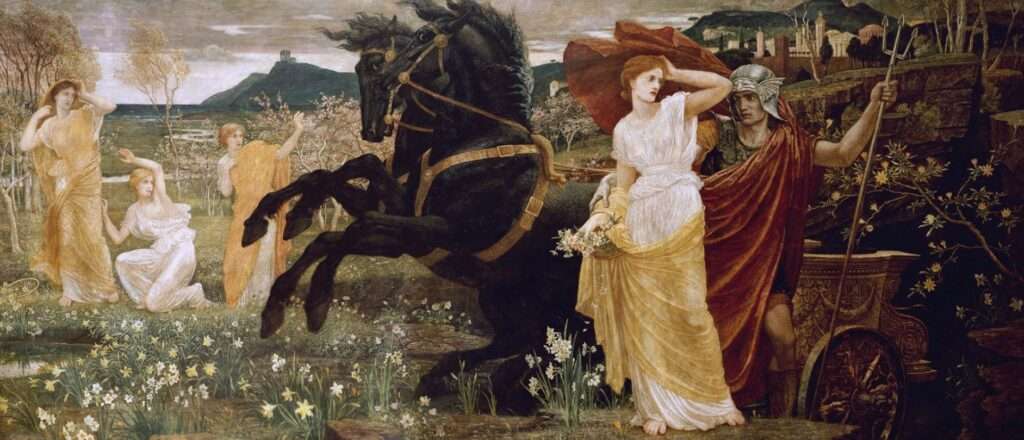
The Start of Spring Art: Persephone and the Ancient Greeks
Perhaps one of the most well-known and beloved tales in Greek mythology, Persephone’s abduction made her the unwilling Goddess of Spring. The child of Zeus and Demeter, the Goddess of the harvest, Persephone, was spotted picking narcissus flowers by Hades, the God of the underworld. Struck by Aphrodite’s arrow of love, Hades was overtaken by his attraction to Persephone, and he quickly swept her up and carried her away in his chariot.
Demeter began searching the Earth upon discovering that her beloved daughter was missing, only to learn of the abduction. Unable to locate her child, the goddess withdrew from the world to live in a temple that she had built in Persephone’s honor. In her seclusion – and deep sadness – she created a cataclysmic drought, thereby forcing the gods to confront Hades so that she might be reunited with her child.
Hermes, with his ability to visit the underworld, is sent by Zeus in an attempt to convince Hades to free the poor goddess. And incredibly, Hades agrees — but trickery abounds in Greek mythology, and the captor has one final trick up his sleeve. Offering Persephone a few pomegranate seeds before her departure, the goddess accepts them, unaware that consuming food from the underworld means she can never be fully released.
Despite this, the Olympians finally reach a compromise: Persephone may return to her home (and tortured mother) for part of the year as long as she returns to Hades at the end of the summer. It is only upon her daughter’s return that Demeter cares for the Earth again, thus ushering in the fertility of Spring.
This sensational tale provided the ancients with what they considered to be an understanding of the changing seasons — and considering our understanding of science at the time, this seems to be a perfectly reasonable explanation. But what’s most striking is that these myths were also used as powerful decorative motifs.
From throne rooms and sacred temples to ceramics and even utilitarian objects, the story of Persephone has been told and retold visually, celebrating spring in art and championing one of the most cherished stories of all time.
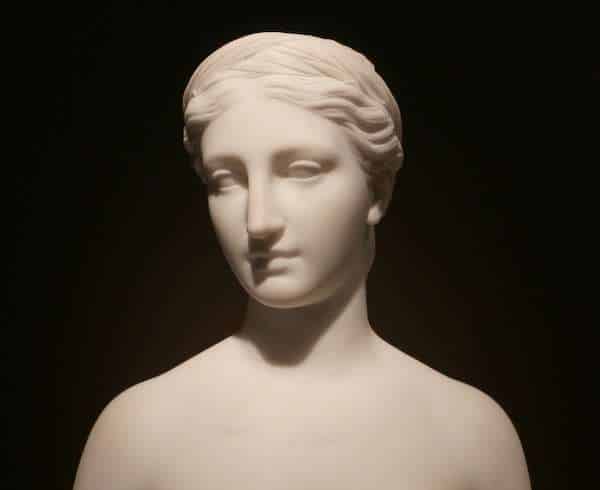
Primavera and the Renaissance
Historically celebrated yet famously elusive, Sandro Botticelli’s spring art masterpiece “Primavera” has captivated audiences since the late 15th century. Shrouded in mystery, art historians have long debated everything from why it was created (and for whom) to the complex allegories it contains.
Bursting with references to classical poetry and literature, the painting combines varied tales to create a distinct narrative that is incredibly familiar and puzzling all at once. Even the title of the work, “Spring,” came much later — in fact, it was bestowed upon the painting by the critic Giorgio Vasari approximately 70 years after its creation.
“The blue figure of Zephyrus, the cold wind of March on the right, clasps the nymph Chloris, whom he will kidnap. Zephyrus will later marry Chloris and she will be transformed into Flora, the goddess of spring. Botticelli has signaled this transformation by overlapping the figure of Chloris and that of Flora, who appears as the third figure from right, elegantly scattering flowers. At roughly center and slightly to the back of the composition is a figure widely agreed to be Venus, in a dress of gray-blue and a red shawl.
Above Venus is her companion, Cupid, blindfolded, with his arrow aimed. Three Graces appear next in diaphanous, transparent white dresses. At the far left appears the god Mercury. Many have interpreted the sequence of these mythological figures to suggest the progression of the season, with Zephyrus of March, followed by Venus, the goddess of April, and Mercury, the god of May, raising his caduceus towards wisps of clouds to disband the final bursts of cold as summer prepares to take the stage.”
Finally, an incredible 500 plant species are said to be represented in the painting, including nearly 200 different flower types — 130 of which have been specifically identified. It goes without saying that Botticelli was certainly quite thorough in his representation of the Spring.
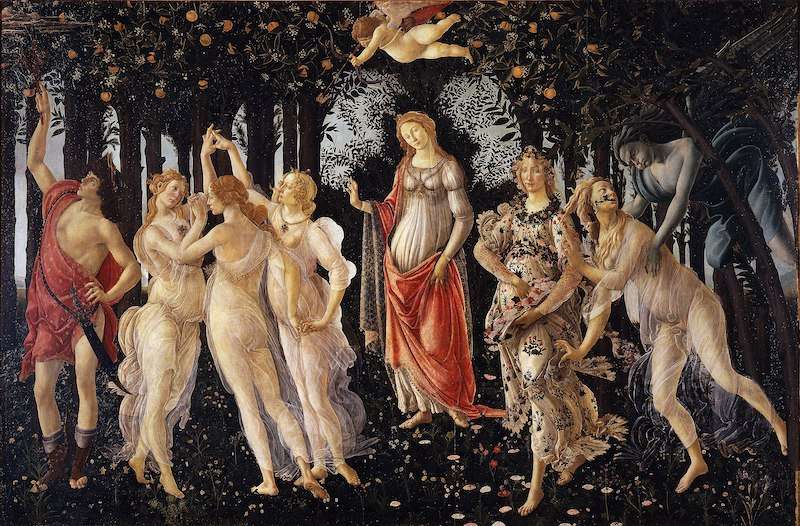
The Barbizon School
While most of the work focused on landscape painting, many of the artists also turned to the quotidian lives of farmworkers and the sleepy villages they called home — a bold departure from the serious nature of the French Academy. Color, softness, and loose brushwork characterize the aesthetics of the school, capturing a relaxed freedom that could only be obtained by leaving the constraints of the studio.
Alfred Sensier, a close friend and biographer of Théodore Rousseau and Jean-François Millet, once wrote: “They had reached such a pitch of over-excitement that they were quite unable to work… the proud majesty of the old trees, the virgin state of rocks and heath… all these intoxicated them with their beauty and their smell. They were, in truth, possessed.”

Impressionism
A natural extension of the ethos of the Barbizon school, the Impressionists sought to capture distinct atmospheres and moments in time, aiming to absorb the viewer in the work and fully transport them to a specific place. Naturally, the progression of the seasons plays a profound role in how we experience a scene, and the Impressionists took full advantage of exploiting these changes.
Historically, the Impressionists made a shocking departure from traditional landscape painting. Once overflowing with classical references and hyper-focused on realism, these artistic rebels rejected the constraints of the academy and were instead focused on spontaneity and speed that would allow them to capture even the most minuscule changes. Differing atmospheres, changes in the light, and even bloom and decay all combine to recreate a definitive moment in time that was directly experienced by the artist.
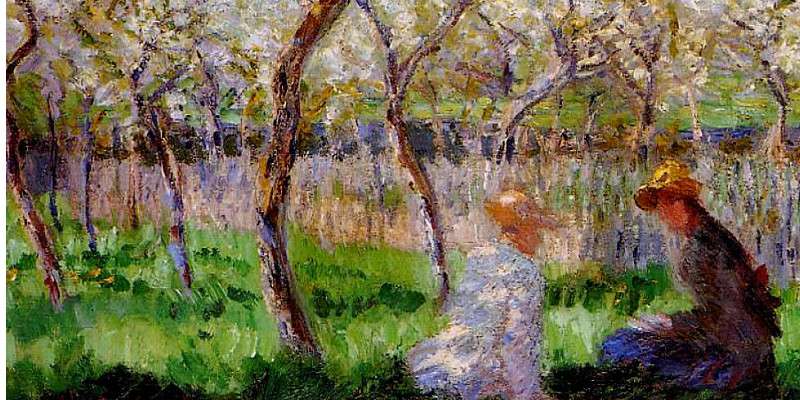
The Secret Language of Flowers in Spring Art
What would Springtime be without the emergence of flowers? This symbol of rebirth is the cornerstone of the changing seasons, and no one interpreted the meaning of different plant life with more enthusiasm than the Victorians.
While the language of flowers has been recognized by various cultures for centuries (including the ancient Greeks, Romans, Egyptians, and Chinese), the Western Victorians emphasized learning their symbolism. Most homes, regardless of class, would have guidebooks for deciphering the symbolism behind each blossom, and the people of the day used this knowledge to deliver messages that couldn’t be spoken aloud.
Do you wish to tell your secret lover that your heart is open and you’re all in? Exchange a bouquet with your right hand to indicate “yes.” Even the state or quality of flowers carried significance: a wilted arrangement, for example, certainly made quite the statement.
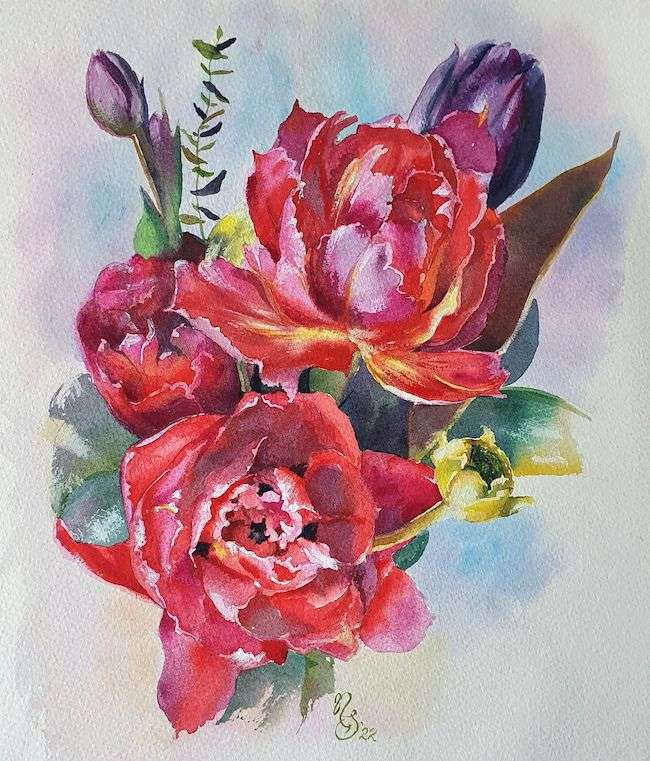
“I admire all flowers: their shapes, combination of shades and colors, character, and incredible ability to die and come to life every spring,” she said. “Spring is a time of change. So it is in our life — the soul warms up before the start of spring and seems to bloom!”
But more than just the visual beauty of nature, Nasibova looks to the natural world as a symbol of something deeper, something spiritual or metaphysical.
“I try to see in the landscapes around me a reflection of the human condition, of the joys and sorrows, the hopes and fears, that we all experience,” she said. “I see in the changing seasons a reflection of the human experience, of the cycles of life, death, and rebirth that we all go through.”
With all of its verdant abundance, spring is so much more than a marker of time. It’s been a source of reverence and inspiration, cultivating stories that steeped back to ancient mythology and fueling important artistic movements. As new life spectacularly emerges, so too does our marvel for nature, influencing our sense of wonder — and our desire to create.
__________
What depictions of spring art inspire you to create? Share your fresh picks in the comments.




